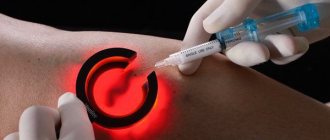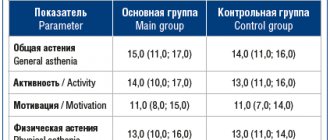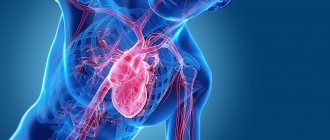As you age, your overall health deteriorates. But the most common pathologies are heart disease in old age. In terms of prevalence, they are ahead of even bronchopulmonary diseases, although they are caused by common causes. These are natural aging processes, due to which blood vessels become stiffer, the regulation of their tone is disrupted, blood pressure increases, and internal organs receive less oxygen. Sometimes bronchopulmonary diseases mask cardiovascular pathologies, and they are detected already in severe stages. Professional care and regular medical examinations offered by the boarding house for the elderly allow you to start treatment on time.
Age-related changes in the heart and blood vessels
The first plaques on the walls of the coronary vessels of the heart begin to appear after 25 years. In youth, this process occurs without consequences, but over time it can lead to atherosclerosis. And this is not the only change that occurs in old age. The heart increases in size, its walls thicken, and the volume of the left ventricle changes. Due to the thickening of the wall, blood flow decreases, the heart chamber fills more slowly, and overall the efficiency of the heart noticeably decreases. In old age:
The contractility of the heart muscle decreases. Over the years, the number of myocardial cells becomes smaller because they do not have the ability to self-renew. As a result, dead cells are replaced by connective tissue, and the remaining cardiomyocytes bear a heavy load. But often they cannot provide normal contractions. The functioning of the heart valves deteriorates. This most affects the functioning of the aortic valve and mitral valve, which lose their former flexibility. If calcium deposits occur, this indicator decreases even more, and the valve apparatus cannot evenly distribute blood throughout the heart cavities. The heart rhythm is lost. Blood transfusion requires impulses; they are generated by special cells of the cardiac conduction system. As there are fewer of them over the years, the heart rhythm is disturbed.
All this leads to the development of various diseases - from hypertension to atherosclerosis.
Symptoms you should definitely pay attention to
Cardiac arrhythmia in old age is insidious in that in the first stages it practically does not manifest itself at all. Each case is individual, and people may experience different feelings with the same diagnosis. Among the most common manifestations are the following signs:
- Weakness and shortness of breath;
- Dizziness and nausea;
- Lack of air, difficulty breathing;
- Increased fatigue;
- Sweating;
- Rapid pulse (above 100 beats per minute);
- Anxiety, causeless worry;
- Chest pain, tingling;
- Pre-fainting state.
Against the background of arrhythmia, symptoms of insufficient blood supply to the brain often occur. Agitation, emotional instability, and memory impairment can progress over time and lead to senile dementia, or dementia.
What heart diseases do older people face?
Even those who lead a healthy lifestyle have problems over the years. All common heart diseases in older people can be divided into three groups:
- pathologies associated with valve dysfunction (heart disease);
- disruption of the heart muscle;
- vascular pathologies and the consequences caused by them (primarily hypertension, coronary heart disease and its complications).
The greatest danger is posed by atherosclerosis, atheroma and coronary heart disease (hereinafter referred to as IHD).
Care and recovery for older people with dementia
The staff of our boarding house have knowledge and experience in working with bedridden patients, elderly people suffering from various cognitive disorders. Our nurses and carers know how to care for older people with brain disorders and ensure their safety. We provide:
- premises equipped for accommodation of people with cognitive impairments;
- constant supervision and care of patients by trained personnel;
- dietary nutrition taking into account age needs and medical recommendations;
- assistance to needy patients in eating, hygiene procedures, careful care for bedridden patients;
- necessary medical procedures, exercises to maintain and develop cognitive skills;
- psychological assistance during rehabilitation of people suffering from Parkinson’s disease...
Atherosclerosis in the elderly
Atherosclerosis is a chronic disease, and it develops slowly enough to allow time to take action and prevent dangerous consequences. With atherosclerosis, lipoproteins are deposited in blood vessels. After some time, connective tissue begins to grow, plaques form, and this leads to a decrease in the lumen of blood vessels. As a result, the blood supply to all tissues is disrupted. Blood clots are especially dangerous because they can block blood flow.
One of the features of atherosclerosis is that it affects not only the aorta, but also the renal and cerebral arteries. And these organs in older people require special attention.
Risk factors for atherosclerosis are:
- high blood pressure above 140/90 mm Hg;
- diabetes;
- obesity, mainly of the abdominal type, in which fat deposits accumulate in the abdominal area;
- elevated cholesterol levels.
Where the arteries experience the greatest hemodynamic load, fatty plaques are deposited on the walls and scars appear. This change in the walls is called atheroma. Over the years, calcium accumulates in it, this leads to thinning of the walls of blood vessels, and under unfavorable circumstances, atheroma rupture can occur. Pieces of blood clots and fatty deposits can travel through the bloodstream throughout the arterial system, causing damage to internal organs.
This can be avoided by following a therapeutic diet, controlling weight, and performing a set of exercises. It's hard to follow this at home. But a private boarding house that provides paid care for the elderly provides such an opportunity.
Features of the treatment of cardiovascular diseases in elderly patients
N
The steady aging of the population of developed countries increases the share of cardiovascular diseases in the overall structure of morbidity, and consequently leads to an increase in the number of elderly patients in the practice of doctors of many specialties. Therefore, knowledge of geriatric aspects of cardiology is an important element of knowledge not only of a modern cardiologist, but also of a geriatrician, family doctor and general practitioner.
Until recently, there was an opinion about the need for only symptomatic treatment of cardiovascular diseases (CVD) in the elderly and the elderly and about the insignificant effect of drug intervention on the prognosis of life at this age. Meanwhile, large clinical studies convincingly show that the patient’s age is not an obstacle to active medical and surgical treatment of many cardiovascular diseases - coronary artery disease, arterial hypertension, stenotic atherosclerosis of the great arteries, heart rhythm disturbances. Moreover, since the absolute risk of cardiovascular complications in the elderly is higher, treatment of CVD in the elderly is even more effective than in young and middle-aged people.
Goals of treatment of cardiovascular diseases in the elderly
Just as in other age groups, the main goals of treatment in the elderly are to improve the quality of life and increase life expectancy. For a physician familiar with the basics of geriatrics and the clinical pharmacology of the elderly, both of these goals are achievable in most cases.
What is important to know when prescribing treatment for older people?
- Features of the course of diseases in old age (other symptoms, multimorbidity)
- Features of metabolism in the elderly, affecting the pharmacokinetics and pharmacodynamics of drugs (Table 1)
- Features of drug prescription (Table 2)
- Features of monitoring the effectiveness and safety of treatment (Table 3)
- Drugs that often cause side effects in older people
This article discusses the features of treatment in elderly patients of the most common cardiovascular diseases:
- Arterial hypertension, incl. isolated systolic hypertension
- Heart failure
- IHD
Arterial hypertension in the elderly
Arterial hypertension (AH), according to various estimates, occurs in 30–50% of people over 60 years of age. Diagnosis and treatment of this disease have a number of important features (Table 4). Elderly people need to measure blood pressure (BP) especially carefully, since they often have “pseudohypertension.” The reasons for this are both the rigidity of the main arteries of the extremities and the large variability of systolic blood pressure. In addition, elderly patients are characterized by orthostatic reactions (due to disturbances of the baroreceptor apparatus), therefore it is strongly recommended to compare blood pressure in the patient's supine position and immediately after moving to an upright position.
Due to the high prevalence of hypertension, especially isolated increases in systolic blood pressure among the elderly, this disease has long been considered as a relatively benign age-related change, the active treatment of which could worsen health due to an excessive decrease in blood pressure.
There were also fears of a greater number of side effects from drug therapy than at a young age. Therefore, doctors resorted to lowering blood pressure in the elderly only in the presence of clinical symptoms (complaints) associated with high blood pressure. However, by the beginning of the 90s of the 20th century, it was shown that regular long-term antihypertensive therapy significantly reduces the risk of developing major cardiovascular complications of hypertension
- cerebral stroke, myocardial infarction and cardiovascular mortality. A meta-analysis of 5 randomized clinical trials, including more than 12 thousand elderly patients (aged >60 years), showed that active reduction in blood pressure was accompanied by a reduction in cardiovascular mortality by 23%, cases of coronary artery disease - by 19%, cases of heart failure - by 48%, stroke rates - by 34%.
A review of the main prospective randomized trials showed that in elderly patients with hypertension, drug lowering of blood pressure for 3–5 years significantly reduces the incidence of heart failure by 48%.
Thus, today there is no doubt that elderly patients with hypertension receive a real benefit from lowering blood pressure. However, after making a diagnosis and making a decision on treatment for an elderly patient with hypertension, it is necessary to take into account a number of circumstances.
Older people respond very well by reducing blood pressure to limiting salt intake and reducing body weight. Starting doses of antihypertensive drugs are half the usual starting dose. Dose titration occurs more slowly than in other patients. You should strive to gradually reduce blood pressure to 140/90 mmHg. (with concomitant diabetes mellitus and renal failure, the target blood pressure level is 130/80 mm Hg). It is necessary to take into account the initial level of blood pressure, duration of hypertension, and individual tolerance to lowering blood pressure. A concomitant decrease in diastolic blood pressure in patients with isolated systolic hypertension is not an obstacle to continuing therapy. In the SHEP
the average level of diastolic blood pressure in the group of treated patients was 77 mm Hg, and this corresponded to an improvement in prognosis.
Thiazide diuretics, beta-blockers and their combinations were effective in reducing the risk of cardiovascular complications and mortality in elderly patients with hypertension, and diuretics (hydrochlorothiazide, amiloride) had an advantage over beta-blockers. Recently completed large study ALLHAT
clearly confirmed the benefit of diuretics in the treatment of hypertension in all age groups.
In the 7th Report of the United States Joint National Committee on the Detection, Prevention and Treatment of Arterial Hypertension (2003), diuretics play a leading role in both monotherapy and combination treatment of hypertension. The HYVET
clinical trial is currently being conducted involving 2,100 patients with arterial hypertension aged 80 years and older. Patients will be randomized to treatment groups with placebo and the diuretic indapamide (including in combination with the ACE inhibitor perindopril). The target blood pressure level in this study is 150/80 mm Hg, the primary end point is cerebral stroke, the secondary end point is overall mortality and mortality from cardiovascular diseases.
Studies have shown the effectiveness of the calcium antagonist amlodipine (Amlovas)
.
The advantage of using amlodipine in lowering blood pressure compared with another calcium antagonist, diltiazem, has been shown. The duration of action of amlodipine is 24 hours, which facilitates a single dose per day and ensures ease of use. THOMS
study noted a decrease in the left ventricular myocardial mass index in the group of patients taking amlodipine.
ACE inhibitors are the drugs of choice for at least two categories of elderly patients with hypertension – 1) with left ventricular dysfunction and/or heart failure; 2) with concomitant diabetes mellitus. This is based on a proven reduction in cardiovascular mortality in the first case and a slowdown in the development of renal failure in the second. If intolerant, ACE inhibitors can be replaced with angiotensin receptor antagonists.
α-blockers (prazosin, doxazosin) are not recommended for the treatment of hypertension in the elderly due to the frequent development of orthostatic reactions. Additionally, in the large clinical trial ALLHAT
an increase in the risk of heart failure during treatment of hypertension with a-blockers has been shown.
Heart failure in the elderly
Currently, chronic heart failure (CHF) affects 1–2% of the population of developed countries. Every year, chronic heart failure develops in 1% of people over 60 years of age and in 10% of people aged >75 years.
Despite the significant progress achieved in the last decades in the development of therapeutic algorithms for the treatment of CHF using various drugs and their combinations, the specifics of treatment of elderly and geriatric patients remain poorly understood. The main reason for this turned out to be the deliberate exclusion from most prospective clinical trials on the treatment of CHF of persons over 75 years of age - primarily women (who make up more than half of all elderly people with CHF), as well as people with concomitant diseases (also, as a rule, the elderly). Therefore, until data from clinical studies specifically designed for the population of elderly and elderly people with CHF are obtained, one should be guided by proven principles for the treatment of CHF in middle-aged people - taking into account the above-mentioned age-related characteristics of the elderly and individual contraindications. Elderly patients with CHF are prescribed ACE inhibitors, diuretics, b-blockers, spironolactone
, as drugs proven to improve survival and quality of life. For supraventricular tachyarrhythmias due to CHF, digoxin is very effective. If it is necessary to treat ventricular arrhythmias against the background of CHF, preference should be given to amiodarone, since it has a minimal effect on myocardial contractility. In case of severe bradyarrhythmias due to CHF (sick sinus syndrome, intracardiac blockade), the possibility of implanting a pacemaker should be actively considered, which often significantly facilitates the possibilities of pharmacotherapy.
Of utmost importance for the successful treatment of CHF in the elderly is the timely identification and elimination/correction of concomitant diseases, often hidden and asymptomatic (exhaustion, anemia, thyroid dysfunction, liver and kidney diseases, metabolic disorders, etc.).
Stable ischemic heart disease in the elderly
Elderly people make up the majority of patients with coronary artery disease. Almost 3/4 of deaths from coronary heart disease occur among people over 65 years of age, and almost 80% of people who die from myocardial infarction belong to this age group. However, in more than 50% of cases, the death of persons over 65 years of age occurs from complications of coronary artery disease. The prevalence of coronary heart disease (and, in particular, angina pectoris) in young and middle age is higher among men than among women, but by the age of 70–75 years, the incidence of coronary heart disease among men and women is comparable (25–33%). The annual mortality rate among patients in this category is 2–3%; in addition, another 2–3% of patients may develop nonfatal myocardial infarction.
Features of IHD in old age:
- Atherosclerosis of several coronary arteries at once
- Stenosis of the left main coronary artery is common
- Decreased left ventricular function is common
- Atypical angina pectoris, silent myocardial ischemia (up to silent MI) are common.
The risk of complications during planned invasive studies in the elderly is slightly increased, so old age should not be an obstacle to referring a patient for a coronary angiographic study.
Features of treatment of stable ischemic heart disease in the elderly
When selecting drug therapy for elderly patients, it should be remembered that treatment of IHD in the elderly is carried out according to the same principles as in young and middle age, but taking into account some of the features of pharmacotherapy (Tables 5,6).
The effectiveness of medications prescribed for ischemic heart disease, as a rule, does not change with age.
Active antianginal, anitischemic, antiplatelet and lipid-lowering therapy can significantly reduce the incidence of complications of coronary artery disease in elderly people. According to indications, all groups of drugs are used - nitrates, b-blockers, antiplatelet agents, statins. However, evidence-based studies specifically devoted to the treatment of coronary artery disease in older and older people are still insufficient. At the same time, the proven advantage of the calcium channel blocker amlodipine
at a dose of 5–10 mg/day in reducing the frequency of episodes of myocardial ischemia (Holter monitoring data). The reduction in the frequency of painful attacks compared to placebo makes the use of the drug promising in this category of patients, especially in those who suffer from hypertension. In recent years, clinical studies have been conducted specifically on the effectiveness of drug treatment for coronary artery disease in the elderly.
Summarized data from studies on secondary lipid-lowering prevention with statins LIPID
,
CARE
and
4S
indicate that with a comparable reduction in the relative risk of cardiovascular complications among young and elderly patients, the absolute benefit of treatment with statins (simvastatin and pravastatin) is higher among the elderly. Effective treatment of 1000 elderly (<75 years of age) patients over 6 years prevented 45 deaths, 33 myocardial infarctions, 32 episodes of unstable angina, 33 myocardial revascularization procedures, and 13 strokes. Clinical trials involving patients over 75 years of age are ongoing. Until the results of these studies are available, issues of prophylactic use of statins in the oldest patients with coronary artery disease should be addressed individually.
In a large multicenter randomized trial PROSPER
studied the effect of long-term use of pravastatin (40 mg/day) on the course and outcomes of coronary artery disease and the incidence of strokes in elderly people (participants' age 70–82 years) with proven coronary artery disease or risk factors for its development. Over 3.2 years of treatment, pravastatin reduced plasma LDL cholesterol by 34% and reduced the combined risk of death from coronary artery disease and nonfatal myocardial infarction by 19% (RR 0.81, 95% CI 0.69–0.94). The relative risk of stroke in the active treatment group did not change significantly (RR 1.03, 95% CI 0.81–1.31), while the total relative risk of death from ischemic heart disease and stroke, as well as non-fatal myocardial infarction and non-fatal stroke decreased by 15% (RR 0.85, 95% CI 0.74–0.97, p=0.0014). Mortality from coronary artery disease among those receiving pravastatin decreased by 24% (RR 0.76, 95% CI 0.58–0.99, p=0.043). The study noted good tolerability of long-term use of pravastatin as part of combination therapy in elderly people - there were no cases of myopathy, liver dysfunction, or statistically significant memory impairment. Among those taking statins, there was a higher incidence of detection (but not an increase in mortality!) of concomitant cancer diseases (RR 1.25 with 95% CI 1.04–1.51, p = 0.02). The authors attribute this finding to more careful diagnostic testing of the older adults included in the study.
Thus, the clinical trial PROSPER at a high methodological level proved the effectiveness and good tolerability of long-term use of pravastatin in elderly people with coronary artery disease, other cardiovascular diseases and cardiovascular risk factors.
Efficiency of coronary bypass surgery and stenting
coronary artery disease in the elderly is comparable to the effectiveness of these interventions in younger patients, so age in itself is not an obstacle to invasive treatment.
Limitations may be caused by concomitant diseases. Given that complications after bypass surgery are more common in the elderly, as well as symptomatic improvement as the most common desired goal of intervention in the elderly, it is necessary to take into account all concomitant diseases during preoperative preparation and, if possible, give preference to balloon coronary angioplasty and coronary artery stenting . Literature:
1. Aronow WS “Pharmacologic therapy of lipid disorders in the elderly” Am J Geriatr Cardiol, 2002; 11(4):247–256
2. Brookes L. “More antihypertensive treatment trials in the elderly: PROGRESS, Syst–Eur, VALUE, HYVET” Medscape coverage of 1st Joint Meeting of the International and European Societies of Hypertension
3. Jackson G. “Stable angina in the elderly.” Heart and Metabolism 2003;10:7–11
4. Rich MW “Heart failure in the elderly: strategies to optimize outpatient control and reduce hospitalizations.” Am J Geriatr Cardiol 2003 12(1):19–27
5. Sander GE “High blood pressure in the geriatric population: treatment consideration.” Am J Geriatr Cardiol 2002; 11;(3):223–232
6. The Seventh Report of the Joint National Committee on Prevention, Detection and Evaluation and Treatment of High Blood Pressure. JAMA, 2003; 289:2560–2572
7. Tresch DD, Alla HR “Diagnosis and management of myocardial ischemia (angina) in the elderly patient” Am J Geriatr Cardiol, 2001 10(6):337–344
8. Belenkov Yu.N., Mareev V.Yu., Ageev F.T. "National guidelines for the diagnosis and treatment of chronic heart failure." “Heart failure”, 2002, No. 6: 3–8
9. Lazebnik L.B., Komissarenko I.A., Guseinzade M.G., Preobrazhenskaya I.N. “Beta-blockers in geriatric practice” RMJ, 1999, t 7 No. 16: 66–70
10. Lazebnik L.B., Komissarenko I.A., Milyukova O.M. “Drug treatment of isolated systolic hypertension in the elderly” RMJ, 1998, v. 6, no. 21: 25–29
11. Lazebnik L.B., Postnikova S.L. “Chronic heart failure in elderly people” RMJ, 1998, v. 6, no. 21: 34–38
Features of coronary heart disease in old age
IHD is one of the most common heart pathologies. Its development is caused by vasoconstriction, which eventually impairs the functioning of the heart. Physical damage is also possible. Moreover, the heart muscle suffers the most. But even if it continues to work, albeit not as efficiently as in a healthy person, the body begins to suffer due to lack of oxygen.
The development of atherosclerosis often leads to this situation. Therefore, coronary disease is caused by the same factors - high blood pressure, diabetes, excess weight.
Features of the manifestation of IHD in old age are:
- Absence of bright emotional coloring of attacks.
- Unusual pain sensations - they arise on the left, but radiate to the neck, back of the head and lower jaw, which is why the patient does not immediately turn to a cardiologist.
- No intense pain. A person feels compression in the area of the heart, heaviness on this side, a feeling of compression in the chest and even the shoulder joint.
- Sudden jumps in blood pressure, sometimes neurological disorders, the appearance of shortness of breath.
On the one hand, in older people the picture of IHD is often blurred and there are no strong manifestations. On the other hand, signs of the disease at this age may appear in the morning after minor physical activity.
IHD develops in various forms, the most common being myocardial infarction, angina pectoris and heart failure, which will be discussed below.
Arrhythmia prevention and lifestyle
To prevent arrhythmia, elderly patients are often prescribed medications containing potassium and magnesium. These substances have a beneficial effect on the functioning of the heart. To improve the absorption of beneficial components, you can additionally take vitamin B6.
To prevent heart disease (including arrhythmias), it is important to pay great attention to lifestyle. Swimming, Nordic walking, even regular walks in the fresh air can improve the condition of the cardiovascular system.
Nutrition plays a huge role. The menu must include foods rich in magnesium and potassium (fresh vegetables, seafood, nuts, dried fruits). Eating foods made from whole grains is encouraged. It is important to avoid overeating. Doctors advise giving up tea and coffee, replacing them with freshly brewed compotes or fruit drinks. Bad habits are unacceptable. Smoking and alcohol increase blood pressure and increase cholesterol in the blood, which leads to arrhythmia and other heart diseases.
It is difficult to get rid of heart rhythm disturbances on your own. However, following simple rules and following the doctor’s recommendations can work a real miracle and return the heart to normal functioning.
Angina and its features
When considering the clinical forms of coronary heart disease in the elderly, it is worth starting with angina. This pathology is due to the fact that insufficient blood volume reaches the myocardium. This may be caused by narrowing of the lumen of blood vessels due to atherosclerosis. But sometimes the reasons are vasospasm due to:
- Sudden changes in temperature or atmospheric pressure. Air humidity also has an effect.
- Regular overeating. When the gastrointestinal tract is full, the diaphragm occupies too high a position, and due to bloating, the blood supply to the heart deteriorates.
- Excessive physical activity inappropriate for age and health.
- Poor diet with a predominance of fatty foods.
When the first signs of angina appear (mainly pressing pain behind the sternum on the left), you need to consult a doctor who will prescribe:
- drug therapy;
- a set of exercises for therapeutic gymnastics;
- following a diet aimed against the development of atherosclerosis (sometimes it is necessary to additionally arrange fasting days).
If the patient lives alone, it is difficult to monitor compliance with these measures. Another thing is the Dobro private home for the elderly, where experienced staff will measure your blood pressure and monitor your pill intake. In addition, they provide balanced nutrition taking into account the personal recommendations of a nutritionist.
Myocardial infarction in old age
An acute attack of coronary artery disease can lead to myocardial infarction. This is a disease in which a section of the heart muscle dies due to insufficient blood supply. Subsequently, a scar appears in this place. Typically, a heart attack is caused by a blockage of the coronary arteries. This occurs due to a detached blood clot. It, in turn, is a consequence of many years of fat deposits.
The classic symptom of a heart attack is the appearance of severe pain in the center of the chest. It is described in different ways - as squeezing, pressing, dull. As with angina, it radiates to the left arm, jaw or neck. The difference is that in this case the pain is stronger, its attacks last longer. Sometimes there is a feeling of squeezing the heart itself.
A person's skin turns pale and becomes damp. Pulse is weak but rapid. Blood pressure can be either low or high. If a large area of the heart muscle is damaged, then other symptoms appear - blueness of the skin due to lack of oxygen, shortness of breath.
The pre-infarction period can last a long time, from several days to one and a half months. If you detect signs of the disease in time, you can prevent its further development, that is, the death of myocardial cells will not occur. But for this, the patient must be under constant supervision - for example, in the private boarding house "Dobro".
If it was not possible to prevent the development of the disease, then an acute period begins, which on average lasts about 10 days. This is followed by the subacute and post-fract period. At this time, the patient also needs special care, since his condition stabilizes, but at the same time, a relapse may occur. You need to follow a diet, take medications prescribed by your doctor, avoid physical activity and stress, and avoid making sudden movements.
The private boarding house will provide professional care with constant monitoring of blood pressure and pulse - at least three times a day. In a few weeks, if the doctor allows, you can start training. Psychological support and social rehabilitation play an important role at this stage.
Rehabilitation after stroke and other diseases of the cardiovascular system
With timely therapy and proper care in a specialized boarding house, many patients after a stroke, heart attack and other diseases of the heart and blood vessels quite quickly restore motor skills and return to a full life.
Problems that doctors, nurses and caregivers of our boarding house solve in the process of rehabilitation of patients after a stroke:
- Constant monitoring of health status: blood pressure, blood sugar and hemoglobin levels.
- Carrying out therapeutic, medicinal and restorative measures.
- For bedridden patients - procedures to prevent the development of complications - bedsores, contracture of joints and muscles, congestive pneumonia, swelling of the extremities, intestinal and bladder dysfunction.
- Proper nutrition, diets for hypertension and atherosclerosis.
- Motor and speech rehabilitation: physical therapy classes, massage, constant verbal contact with patients.
- Maintaining good spirits and a positive attitude, eliminating negative emotions and anxiety states leading to apathy and depression, which, in turn, have a negative impact on the effectiveness of rehabilitation.
Heart failure
This clinical form of IHD refers to a condition in which the heart is unable to provide normal blood supply to other organs. Heart failure develops as a consequence not only of IJS, but also of myocarditis - an inflammatory disease of the heart muscle, acquired heart defects, and some rheumatic pathologies.
For treatment, it is necessary to carry out constant ECG monitoring, regularly do stress tests, etc. Treatment is mainly medicinal, and methods such as following a special diet and drinking regimen, losing weight, and giving up bad habits are also provided. But a balanced diet and adequate sleep also play an important role.
How to restore a heart weakened by disease
Cardiologists know how to strengthen the heart of an elderly person. Their advice is especially needed for people who have suffered serious illnesses or pathologies that have caused complications in the main muscle. An experienced physician will help you adjust your lifestyle, choose the right diet and medications. All this taken together significantly prolongs the life of old people, which means it is necessary:
- Visit a cardiologist regularly.
- At least once a year, undergo a comprehensive examination of the cardiovascular system - an electrocardiogram, ultrasound of the heart, biochemical tests for the composition and quality of blood.
- If symptoms of heart disease appear, as well as if test results worsen, take action and increase the number of visits to a specialist.
- Monitor the health of not only the heart, but also other vital systems. You can become fixated on one thing and overlook serious pathologies of the lungs, digestive system, etc. These processes can also negatively affect the heart condition of an elderly person.
- Do not self-medicate. Medicines should be taken only in consultation with a doctor and adhere to the dosage and frequency prescribed by the specialist. Spontaneous use of drugs (when you feel bad) in arbitrary quantities can have a negative effect.
Read the material on the topic: What should be the proper care for the elderly
Arrhythmia in old age
Over the years, the heart rhythm becomes disrupted. It can slow down (bradycardia) or speed up (tachycardia), a distinction is made between conduction disturbances and the occurrence of an electrical impulse. This form of the disease is called extrasystole.
Arrhythmia is rarely an independent disease. But it often acts as a symptom of other problems in the body, such as heart disease or respiratory system disease. If an arrhythmia is detected, the doctor prescribes additional diagnostics.









![Rice. 1. Functioning of the glymphatic system of the brain (according to [11]) 1. Glymphatic system functioning (according to [11])](https://expert35.ru/wp-content/uploads/ris-1-funkcionirovanie-glimfaticheskoj-sistemy-mozga-po-11-fig-1-330x140.jpg)
